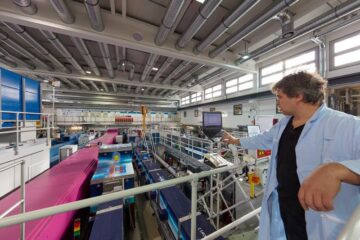New market for ’old’ building companies

Delft research offers consumers the possibility to order a complete house, in prefabricated parts, from a building company. This so-called replacement building offers existing building companies growth possibilities in a shrinking market.
On Wednesday 25 September, Caspar van den Thillart will defend his thesis on the possibilities of this Japanese model for application in the Netherlands. “The consumer doesn`t need to spend a lifetime rebuilding, and achieves better results with less effort. Moreover, the prefabrication waste problem can be controlled more effectively,” says Van den Thillart.
The market for the building of new houses is rapidly shrinking. The number of locations for new houses is also decreasing. Many existing houses are being converted. Van den Thillart: “The future for the housing sector looks bleak, and so the building community will have to look at other possibilities to survive. Replacement building, as is practised in Japan, may be a solution.”
The maximum age of a house in Japan is about 25 years. After a certain period, the Japanese go to a housing factory and simply order a new house. Choosing from a large number of prefab parts, they can ‘design’ their new dream home. Moreover, the consumer avoids the troubles of building himself. This is a one-stop shopping process in Japan: within a number of months, the old house is broken down in the new house is built on the same site. Van den Thillart: “In comparison to the Japanese system, European building is very traditional, and the consumer does not have much input.” Because of the lack of harmonisation of European building rules, the building sector does not have much of an opportunity to develop. In the Dutch market, replacement building is hampered by our way of building and the strict rules governing city planning. In his thesis, Van den Thillart tries to solve the problem.
Alongside an in-depth analysis of the developments in the market, and of building technology, Van den Thillart also explored possibilities for the fragmented European market to sustain a better replacement market, one which is able to reach the individual consumer. A good option is the so-called ‘virtual KIT.’ A flexible set of building components with which the consumer can design his own home. The flexibility of these components offers the consumer many possibilities. The ‘digital showroom’ offers continuous support for the consumer. Van den Thillart: “There is still a long way to go for the building community as well as for the Dutch consumer, who is not at all used to the system. However, if the building community wants to survive, it will have to influence the demand for its services. Virtual KITs provide a way of doing this.”
Media Contact
Weitere Informationen:
http://www.tudelft.nlAlle Nachrichten aus der Kategorie: Architektur Bauwesen
Die zukunftsorientierte Gestaltung unseres Wohn- und Lebensraumes erhält eine immer größer werdende Bedeutung. Die weltweite Forschung in den Bereichen Architektur und Bauingenieurwesen leistet hierzu einen wichtigen Beitrag.
Der innovations-report bietet Ihnen hierzu interessante Berichte und Artikel, unter anderem zu den Teilbereichen: Nachhaltiges Bauen, innovative Baumaterialien, Bautenschutz, Geotechnik, Gebäudetechnik, Städtebau, Denkmalschutz, Bausoftware und Künstliche Intelligenz im Bauwesen.
Neueste Beiträge

Bakterien für klimaneutrale Chemikalien der Zukunft
Forschende an der ETH Zürich haben Bakterien im Labor so herangezüchtet, dass sie Methanol effizient verwerten können. Jetzt lässt sich der Stoffwechsel dieser Bakterien anzapfen, um wertvolle Produkte herzustellen, die…

Batterien: Heute die Materialien von morgen modellieren
Welche Faktoren bestimmen, wie schnell sich eine Batterie laden lässt? Dieser und weiteren Fragen gehen Forschende am Karlsruher Institut für Technologie (KIT) mit computergestützten Simulationen nach. Mikrostrukturmodelle tragen dazu bei,…

Porosität von Sedimentgestein mit Neutronen untersucht
Forschung am FRM II zu geologischen Lagerstätten. Dauerhafte unterirdische Lagerung von CO2 Poren so klein wie Bakterien Porenmessung mit Neutronen auf den Nanometer genau Ob Sedimentgesteine fossile Kohlenwasserstoffe speichern können…





















